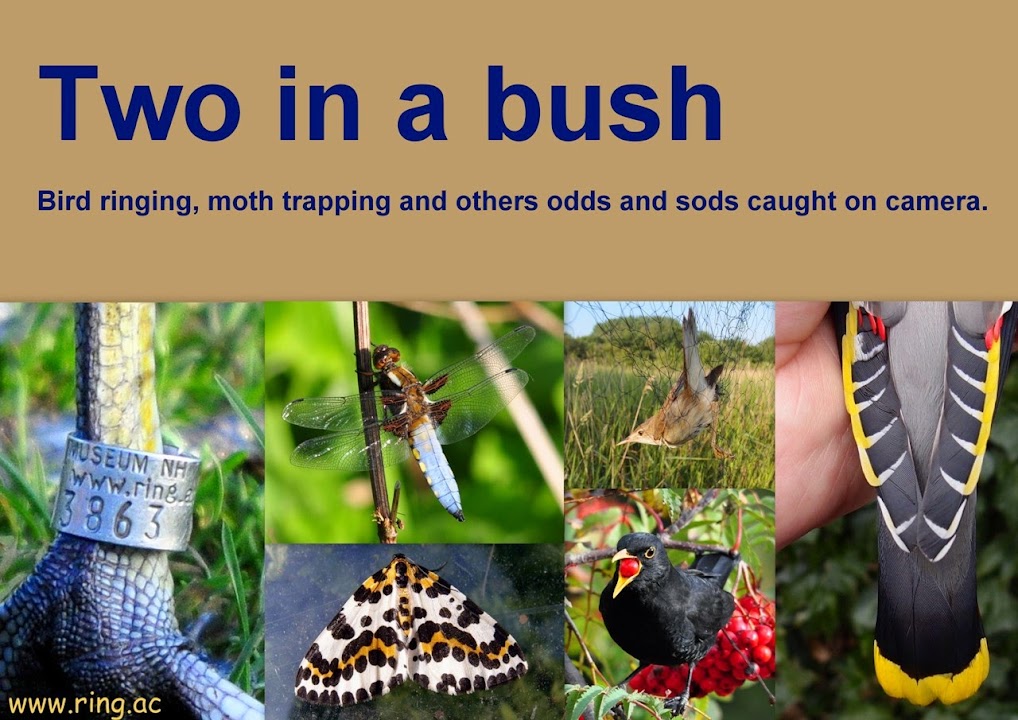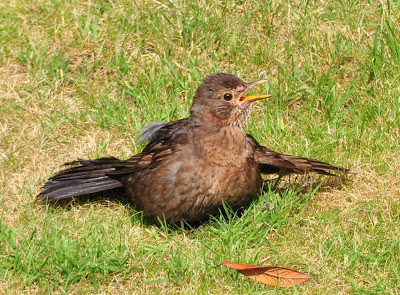One of our favourite walks is around the southern shore of Red Wharf Bay below Pentraeth Forest. The first day we walked this section of the coastal path the sun was beating down and there were plenty insects around. Whilst walking the section of the path that runs along the top of a wall we spotted a Common Hawker dragonfly laying eggs in a small pool below. A still pool at the top of a salt marsh is not somewhere I would normally expect to see a dragonfly laying eggs so this pool must rarely get inundated with sea water and may also be spring fed.
I had left the DSLR at home and we only had a couple of compact cameras with us but we still managed to get some decent shots. This female was so engrossed in egg laying that she allowed extremely close approach.
 |
| female Common Hawker (Aeshna juncea) |
When I say she allowed close approach I mean extremely close. The following sequence of shots was taken by Jack and show just how close I was able to get. I haven't seen such a confiding dragonfly before so getting this close and watching her behaviour was a real pleasure. The odd time I disturbed her, when I dropped the cap off the front of the camera or got too cheeky and removed the odd rush stem, she only flew round and fed for a minute before returning to lay more eggs.
Getting close wasn't a problem but getting focus lock in the right place often was. We probably spent the best part of an hour taking photos and the dog got extremely bored. He eventually got fed up of waiting for his walk to continue and went to sleep.
 |
| Bryn yawns at all the fuss over a common dragonfly |
While we were taking photos of the dragonfly another insect visited the pool but we couldn't work out what it was. It was about the size of a queen bumble bee but it moved so fast you couldn't really focus on it, all you could see was a blurred shape. It was a noisy beast and made a low buzzing noise but we still hadn't a clue what sort of insect it was. Whatever it was it would suddenly appear about 18 inches over the water and then drop down a few times in quick succession and you only really knew that from the ripples it made from contact with the water. The action was far too fast to see any details and all we were aware of was the buzz, the blur and the ripples. We pondered over what it could be but we hadn't a clue. I hadn't encountered anything like it before in all my years of working and ringing in wetland habitats.
We decided to visit the area the next day and Jack suggested we take a butterfly net should we happen on the mystery creature again. When we got to the pool where we had photographed the dragonfly the day before the mystery creature was there and causing ripples in the water. I climbed down from the wall as fast as I could but it had gone before I had chance to make a sweep with the net. I decided to wait and after about 20 minutes another or the same returned. I saw the first set of ripples and swept the net over the pool. I could hear I had caught something and put the net on the ground closing the bag of the net in the process.
On looking at what I had caught I could see it was a very large fly of some description but it wasn't like anything I had seen before in terms of size that is. It was huge as flies go and very scary looking too. I put it in a tub to get a closer look and to take some photos for identification. It was over an inch long and looked like it could give a nasty bite so I wasn't prepared to try and handle it outside of a tub. I tried to search for what it could be via the internet on my phone but I couldn't get a good enough signal so had to give up. We were due to go home that evening so it would have to remain a mystery until then.
On getting home a few internet searches using phrases like 'largest fly in the UK' soon revealed it to be a large tabanid fly and probably the Dark Giant Horsefly (Tabanus sudeticus). There is a very similar and equally large insect called, unsurprisingly, the Pale Giant Horse-fly (Tabanus bovinus) but that is much rarer in the UK. I just didn't know we had horseflies that size in this country and it is not something you would easily overlook. It is the heaviest fly in Europe and is also known as the Dark Behemothic Horsefly. It seems to have a patchy distribution in the UK and is fairly common in parts of the southern England, Wales, the Lake District and in parts of Scotland. Thankfully it appears to be absent from this part of northwest England.
 |
| Dark Giant Horsefly (Tabanus sudeticus). |
 |
| Dark Giant Horsefly (Tabanus sudeticus). |
The insects in this post have something in common in that they have been around in some form or other for a very long time. Both descend from a lineage that dates back to prehistoric times and both had much larger relatives in the past. Prehistoric dragonflies had wing spans of over two feet so I wouldn't want to have encountered the dinosaur blood sucking equivalent of our horsefly.








































